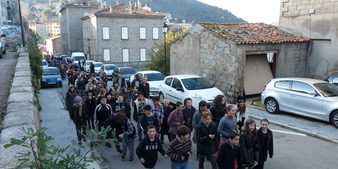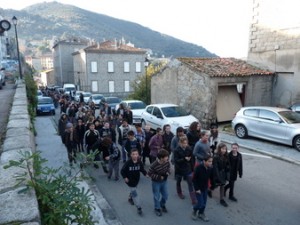Where does the Saint Andrew celebration come from?
Sant’Andria is a popular Corsican traditional celebration. However, this holiday is also celebrated in Russia, Romania and Greece. Moreover, St Andrew’s Day is a Scottish National celebration. Where does this festivity come from? Who was Saint Andrew?
Saint Andrew in Corsica
In Corsica, this day symbolises the end of autumn and the values of sharing and solidarity.
Traditionally, the 11th November and Saint Martin symbolises the end of the harvest and the beginning of the winter season in Europe. During this period, people put aside their stock for the winter months and they kept a part of it for the destitue.
The search for food during Saint Andrew allowed those in need to prepare for the oncoming winter and at the same time to guard their dignity.
Thereby on the 30th November, during the pricantula*, people in need would knock on the doors and ask for something to eat and drink.
In today’s society, the concept behind people in need is progressively reducing and therefore that is why Saint Andrew’s Day is not celebrated in certain villages.
However, its festive aspect is conserved, in terms of traditional festivities, costumes, cakes, biscuits and chestnuts.
Originally this traditional festivity of knocking door to door comes from “Sermon on the Mount”.
The Sermon on the Mount
Jesus gave 5 pieces of bread and 2 fishs to Andrew the apostle to give food to people who came to listen him.
Andrew the apostle begun Saint Andrew, the first of the twelve apostles to have joined Jesus.
He was crucified by Romans on a diagonal cross, on 30th November 60.
Sant Andrew in Roumania and Scotland
For that generous act and for his travels on Black Sea, Andrew became the Saint Patron of Romania.
In Scotland, 2 theories exist to explain why Andrew became the Saint Patron of the nation.
The first one says that its relics were brought to Saint Andrew cathedral in the 4th century. The city became the high place of pilgrimage during the middle-age.
The other version says that in 800, the king Angus MacFergus saw a diagonal cross in the sky before a big battle. He took Saint Andrew for protector and that is why the Scottish flag has a white cross on blue background.





